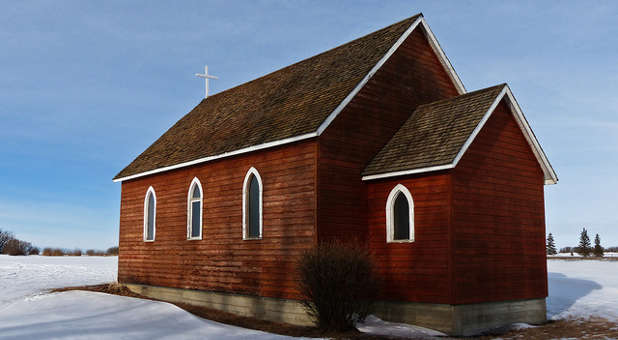
Nine out of 10. That's a lot.
Nine out of 10 churches in America have an average worship attendance of less than 350. And that percentage has not changed significantly for many years. Yet the unchurched pool of persons is increasing in most communities. There are people yet to be reached.
But most churches will never exceed 350 in attendance. Why?
A Few Caveats
Allow me to preface my analysis. First, big is not necessarily better. A church with more people in attendance is not necessarily more faithful than a smaller church. Second, some churches are in very sparsely populated areas. There may not be 350 people in a five-mile radius (though every community still has people who need to be reached).
My third caveat is key. I believe leadership is indeed a biblical and theological issue. It's really a matter of healthy stewardship. I offer this third caveat because I will be addressing the issue of leadership in this post.
Attendance Levels of Churches in America
We are a nation and continent of smaller churches. And though we have far more small churches than large churches, there is a big migration of people from smaller to larger churches. In other words, many of the smaller churches are getting smaller, and many of the larger churches are getting larger.
Here is a simple depiction of the number of churches at three different levels:
- 50 percent of all churches in America average less than 100 in worship attendance.
- 40 percent of all churches in America average between 100 and 350 in attendance.
- 10 percent of all churches in America average more than 350 in attendance.
Keep in mind that the upper 10 percent tend to include more of the growing churches, while the lower 90 percent tend to include more of the declining churches.
One of the Key Reasons
There is no single reason to explain the apparent ceiling of 350 in attendance of most churches. I do believe, however, that there is a major reason for this barrier. Such is the thesis of this post:
One of the key reasons most churches do not move beyond 350 in average worship attendance is they do not have sufficient leadership and structures in place.
Many smart people have provided analyses of what is commonly known as the 200 barrier. I believe that the 200 barrier is highly elastic. In other words, the barrier is really somewhere between 150 and 350, depending on a number of circumstances. Again, I believe that the key reason stated above is among the greatest inhibitors of growth.
Increasing Organizational Complexity
Moses was an unintended victim of organizational complexity. He was trying the Lone Ranger approach to the leadership of Israel. The nation would implode and he would lose his leadership authority if he kept doing what he was doing.
His father-in-law, Jethro, saw the flaws of his leadership and said:
"What you're doing is not good . . . You will certainly wear out both yourself and these people who are with you, because the task is too heavy for you. You can't do it alone" (Exodus 18:17-18, HCSB).
So, following Jethro's advice and wisdom, Moses became a different kind of leader with a different kind of organization.
Here are the five major levels of organizational complexity in churches according to average worship attendance:
1. Under 100: Family and friends
2. 100 to 250: Basic
3. 251 to 350: Challenging
4. 351 to 750: Complex
5. Above 750: Highly complex
Most churches cannot or are not willing to make the types of changes that are necessary in complex organizations. In future resources, I will share what many leaders and churches are doing to move beyond the 100, 250, and 350 ceilings.
In the meantime, let me hear from you.
Thom Rainer is the president of LifeWay Christian Resources. For the original article, visit thomrainer.com.
Get Spirit-filled content delivered right to your inbox! Click here to subscribe to our newsletter.
Dr. Steve Greene is now sharing stories, teachings, and conversations with guests who lead with love on Love Leads, a new podcast. Listen now.
Dr. Mark Rutland's
National Institute of Christian Leadership (NICL)
The NICL is one of the top leadership training programs in the U.S. taught by Dr. Mark Rutland. If you're the type of leader that likes to have total control over every aspect of your ministry and your future success, the NICL is right for you!
FREE NICL MINI-COURSE - Enroll for 3-hours of training from Dr. Rutland's full leadership course. Experience the NICL and decide if this training is right for you and your team.
Do you feel stuck? Do you feel like you’re not growing? Do you need help from an expert in leadership? There is no other leadership training like the NICL. Gain the leadership skills and confidence you need to lead your church, business or ministry. Get ready to accomplish all of your God-given dreams. CLICK HERE for NICL training dates and details.The NICL Online is an option for any leader with time or schedule constraints. It's also for leaders who want to expedite their training to receive advanced standing for Master Level credit hours. Work through Dr. Rutland's full training from the comfort of your home or ministry at your pace. Learn more about NICL Online. Learn more about NICL Online.


